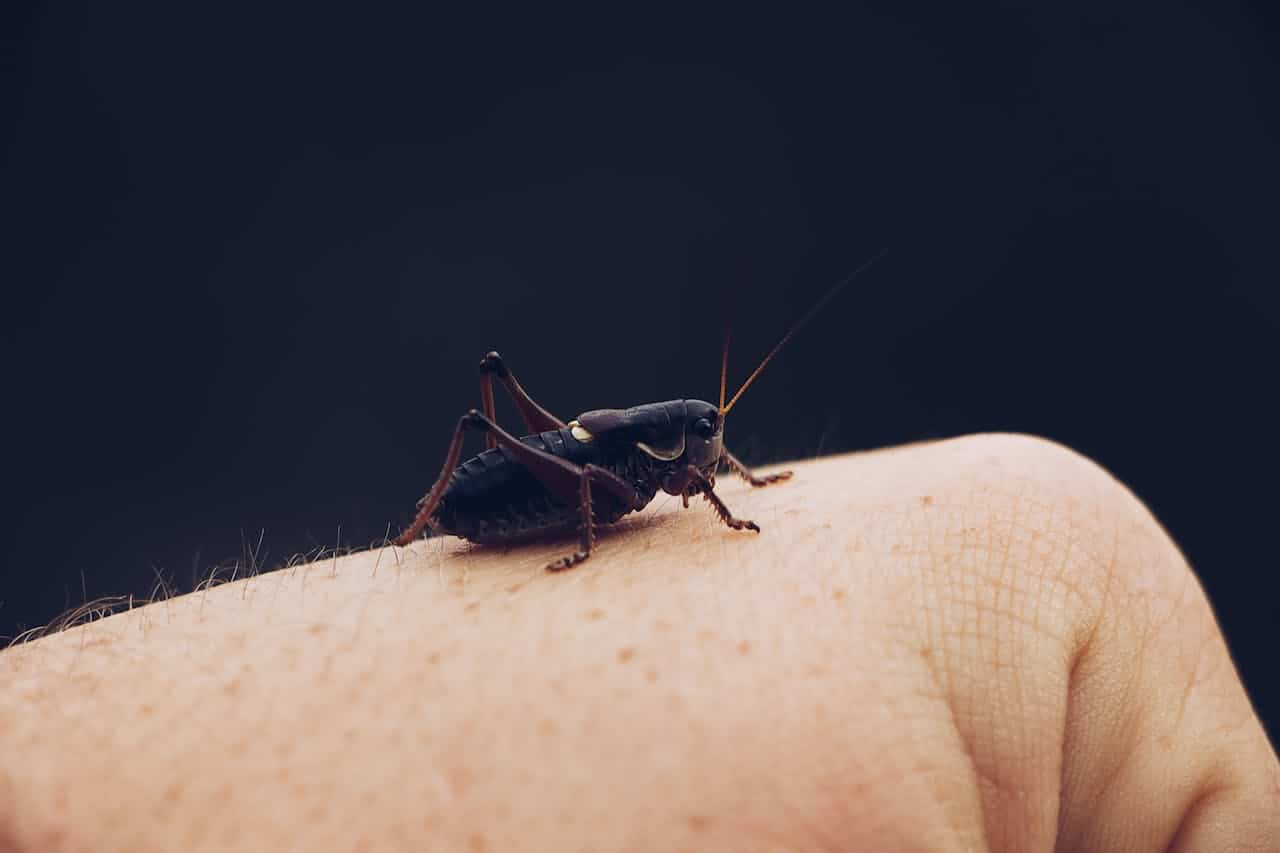Want to eliminate crickets from your home naturally?
Without exposing your family to harmful chemicals?
You’re not alone. 92% of homeowners are now looking for more eco-friendly ways to protect their homes these days.
The good news?
You can eliminate crickets indoors naturally with methods that actually work. These green and natural solutions are…
- Safe for kids and pets
- Better for the environment
- More effective than chemicals (in many cases)
Here’s the problem…
Most people assume natural cricket elimination methods just don’t work as well as harsh pesticides. But that’s no longer true.

What you’ll discover…
- Why Go Eco-Friendly For Cricket Control?
- How To Understand Cricket Behavior Indoors
- Natural Cricket Elimination Methods That Work
- Eco-Friendly Cricket Prevention Strategies
Why Go Eco-Friendly For Cricket Control?
Eco-friendly cricket elimination is fast becoming the go-to solution for homeowners…
Here’s why…
Traditional pesticides can be dangerous. They leave residues on the floors, counters, and other surfaces where your children and pets play. Plus, they can contaminate the air you breathe.
But there’s another reason to go green with your cricket control strategy.
Natural methods actually target the root causes of your cricket problems. They don’t just kill crickets – they make your home a lot less attractive to crickets in the first place.
Think about it…
If you can eliminate what attracts crickets indoors, you won’t have to keep spraying chemicals every few weeks. That saves you time, effort, and money while keeping your family safer from pesticides’ potential dangers.
And with 85% of people being more conscious than ever about how they clean their homes, eco-friendly pest control couldn’t be a better fit for the modern household. Of course, if you want professional guidance, you can learn how to get rid of crickets in Ventura County from local experts who understand regional cricket behavior patterns.
How To Understand Cricket Behavior Indoors
Do you know the secret to effective cricket control?
Understanding why crickets are even in your home in the first place.
Don’t get us wrong…
Crickets won’t randomly infest your home. They have needs and they have reasons when invading your household. Let’s look at what attracts crickets indoors.
- Warmth – especially when outdoor temps drop
- Moisture – they need water to survive
- Food sources – ranging from crumbs to fabrics
- Shelter – dark, undisturbed places to hide during the day
But here’s the thing…
The two species of crickets most likely to come inside your home are house crickets and field crickets. The former love warm places, so kitchens and basements are hotspots. Field crickets are more likely to show up when it’s too cold or dry outside.
The average cricket lifespan is around 90 days. But here’s what most people don’t realize…
Female crickets can lay up to 100 eggs over their lifetime. This means a small cricket problem can quickly turn into a major infestation if you don’t take action.
Crickets can also be surprisingly destructive. They will eat fabrics, wallpaper, paper products, even the glue in book bindings. The damage adds up fast if you’ve got multiple crickets feeding and breeding in your home.
Don’t panic…
If you understand what attracts crickets, you can use that information to keep them from coming inside in the first place.
Natural Cricket Elimination Methods That Work
Want to boot those crickets out the natural way?
Try these proven green methods for keeping crickets at bay without exposing your family to harsh chemicals.
Diatomaceous Earth – The Natural Cricket Killer
Diatomaceous earth (DE) is one of the best natural cricket killers out there. In fact, if you’ve tried most other methods with no results, give DE a shot.
How it works: DE is made from microscopic fossilized algae with razor-sharp edges. When a cricket steps on it, the microscopic particles slice up the exoskeleton, causing dehydration.
Sprinkle food-grade diatomaceous earth around baseboards, inside wall crevices, and behind appliances. DE is 100% non-toxic to humans and pets, so it’s completely safe.
Essential Oil Barriers
Crickets hate certain scents. Use peppermint, lemon, tea tree, or lavender oil in a spray bottle mixed with water. Spray around entry points and where you’ve seen crickets.
Tip: add a few drops of dish soap to help the mixture adhere to surfaces better.
Molasses Cricket Traps
If you like old-school solutions, this one works great…
Mix 2-3 tablespoons of molasses with water in a shallow bowl. The sweet smell attracts crickets, they jump in, and can’t escape. Set traps where you hear the most chirping.
Pro tip: Add a drop or two of dish soap to reduce surface tension.
Strategic Sticky Traps
Place commercial sticky traps along walls where crickets travel, at entry points, and in dark corners. Crickets like to follow walls, so place traps along likely routes.
Boric Acid Applications
Lightly dust boric acid in cracks, crevices, and behind appliances. Avoid contact with children and pets. When crickets contact the powder, they’ll ingest it while grooming, disrupting their digestive system.
Eco-Friendly Cricket Prevention Strategies
The best cricket control is preventing them from entering your home in the first place.
Seal Entry Points
Crickets can squeeze through tiny gaps. Seal cracks in foundation walls, gaps around windows and doors, and utility holes. Caulk small cracks, use steel wool for larger gaps.
Eliminate Moisture Sources
Crickets need water to survive. Fix leaky pipes, use dehumidifiers in damp areas, ensure proper ventilation, and remove standing water.
Remove Food Sources
Vacuum crumbs regularly, store pet food in sealed containers, clean up spills, and get rid of cardboard boxes (the glue attracts crickets).
Outdoor Lighting Changes
Swap out white lights for yellow sodium vapor bulbs for outdoor lighting. Crickets are less attracted to them than bright white lights.
Landscape Management
Keep vegetation away from your foundation. Trim bushes and remove debris where crickets might hide.
Monitor Your Progress
How will you know if your eco-friendly cricket control is working?
Track reductions in chirping at night, fewer sightings, less fabric damage, and crickets caught in traps.
Bear in mind, natural methods take longer than chemicals. Be patient and consistent.
Winning The Cricket Wars Naturally
Eco-friendly cricket elimination isn’t just better for your family and the environment – it’s often more effective in the long run.
Natural methods like diatomaceous earth, essential oils, and eco-friendly prevention strategies eliminate crickets without exposing your loved ones to pesticides’ potential harm.
The keys to success:
- Start with prevention
- Use multiple methods for best results
- Be consistent
- Monitor and adjust as needed
With 62% of homeowners making eco-friendly home improvements these days, green and natural pest control is becoming the new standard.
Take action today and reclaim your peaceful, quiet home from crickets – naturally.




